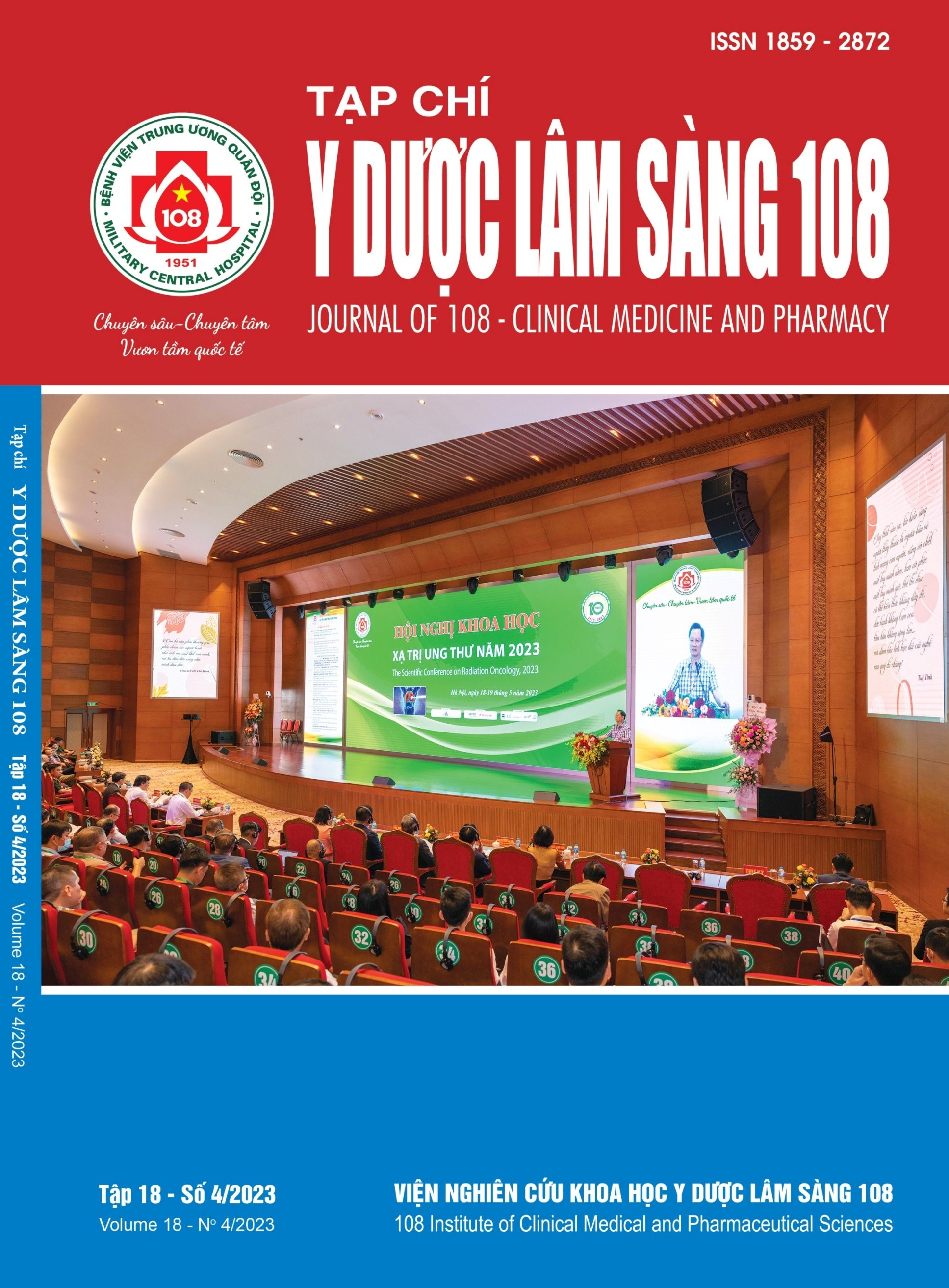Efficacy of narrow-band ultraviolet B in treatment of patients with vitiligo at Can Tho Hospital
Main Article Content
Keywords
Abstract
Objective: To evaluate the therapeutic efficacy of narrow-band ultraviolet B (NB-UVB) in vitiligo. Subject and method: Intervention cohort study on 58 patients with vitiligo diagnosed by clinical findings at Can Tho Hospital of Dermato - Venereology from 05/2020 to 11/2020. The patients were treated with UVB 308nm once a week with initial dose according to recommendation of manufacturer (VTRAC, Photomedex, USA), then adjusted the dose at which obtaining a minimum erythema dose (MED). The therapeutic efficacy was evaluated after 1 month, 2 months and 3 months by using VASI. Result: 67.2% patients with duration of vitiligo 6 months to 2 years. 20.7% patients with VIDA +1 and +2. After 1 month, the rate of good response was 8.7% and increased to 72.5% after 3 months (p<0.05). Lesions on face and neck were better responsed than those on other positions. The focal vitiligo was better responsed to the treatment than the generalized type. Side effect was not frequent. The ratios of patients with perilesional hyperpigmentation, persistent erythema and blister were 8.6%, 6.8% and 3.4%, respectively. Conclusion: Narrow-band UVB 308nm therapy is effective and safe in the treatment of vitiligo.
Article Details
References
2. Phan Ngọc Huy và Nguyễn Trọng Hào (2020) Mức độ ảnh hưởng chất lượng cuộc sống trên bệnh nhân bạch biến. Tạp chí Y học TP. Hồ Chí Minh, 4. (Phụ bản Tập số 24), tr. 26-32.
3. Đỗ Thị Hồng Nhung (2017) Hiệu quả điều trị của bệnh bạch biến bằng chiếu tia cực tím UVB dải hẹp 311nm. Luận văn thạc sĩ y học, Đại học Y Hà Nội.
4. Lê Thị Hoài Thu và Phạm Thị Lan (2018) Hiệu quả điều trị bệnh bạch biến thể khu trú bằng bôi tacrolimus và chiếu UVB dãi hẹp. Tạp chí Y học Việt Nam, 2(470), tr. 81-84.
5. Ali Alikhan, Lesley M Felsten, Meaghan Daly, Vesna Petronic-Rosic (2011) Vitiligo: A comprehensive overview. Journal of the American Academy of Dermatology 65(3): 473-491.
6. Anbar TS, Westerhof W, Abdel-Rahman AT, El-Khayyat MA (2006) Evaluation of the effects of NB-UVB in both segmental and non-segmental vitiligo affecting different body sites. Photodermatol Photoimmunol Photomed 22(3): 157-63.
7. Grimes PE, Sevall JS, and Vojdani A (1996) Cytomegalovirus DNA identified in skin biopsy specimens of patients with vitiligo. J Am Acad Dermatol 35(1): 21-26.
8. Kishan Kumar YH, Rao GR, Gopal KV, Shanti G, Rao KV (2009) Evaluation of narrow-band UVB phototherapy in 150 patients with vitiligo. Indian J Dermatol Venereol Leprol 75(2): 162-166.
9. Komen L, da Graça V, Wolkerstorfer A, de Rie MA, Terwee CB, van der Veen JP (2015) Vitiligo Area Scoring Index and Vitiligo European Task Force assessment: reliable and responsive instruments to measure the degree of depigmentation in vitiligo. British journal of dermatology 172(2): 437-443.
10. Nordal EJ, Guleng GE, and Rönnevig JR (2011) Treatment of vitiligo with narrowband-UVB (TL01) combined with tacrolimus ointment (0.1%) vs. placebo ointment, a randomized right/left double-blind comparative study. J Eur Acad Dermatol Venereol 25(12): 1440-1443.
11. Sehgal VN and Srivastava G (2007) Vitiligo: compendium of clinico-epidemiological features. Indian J Dermatol Venereol Leprol 73(3): 149-156.
 ISSN: 1859 - 2872
ISSN: 1859 - 2872
